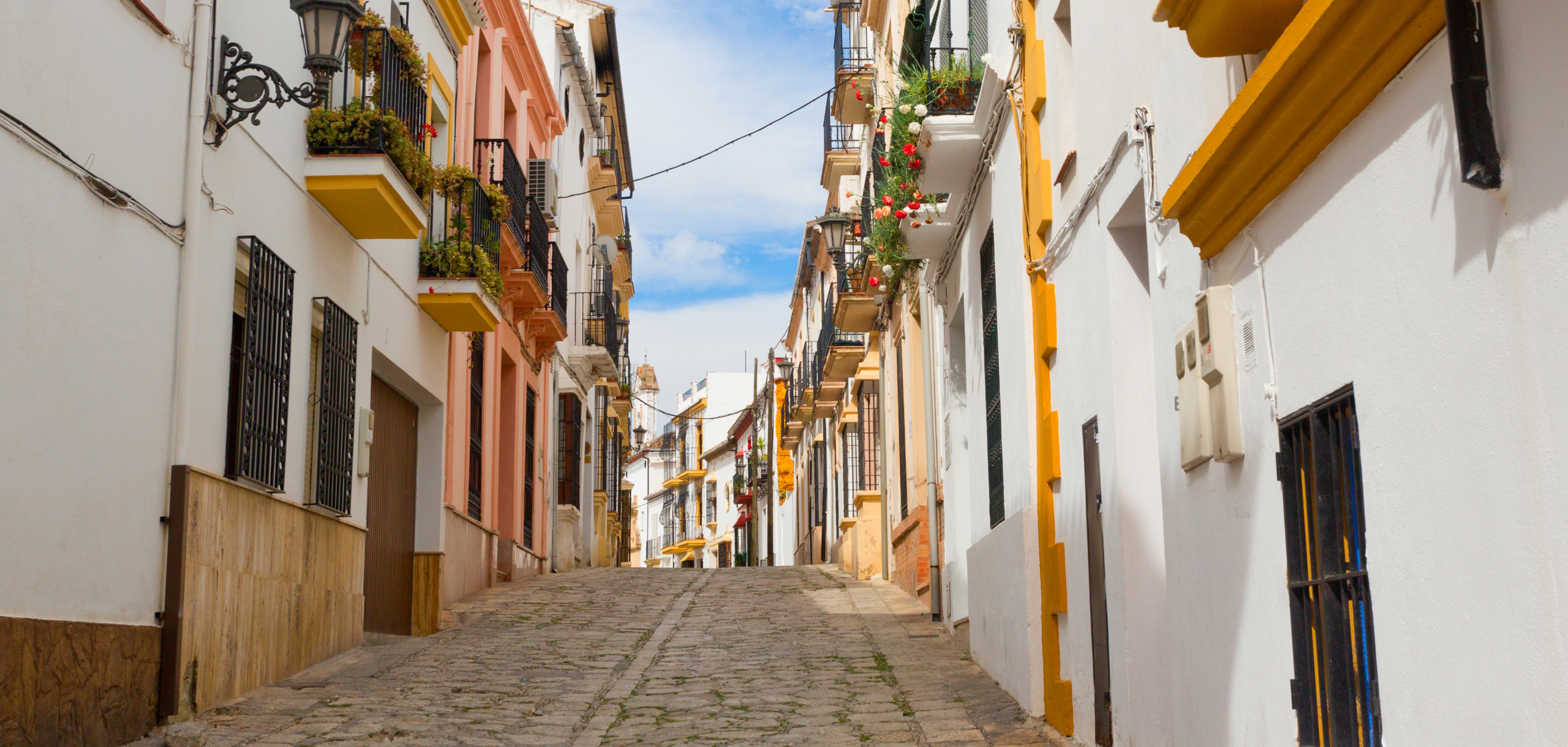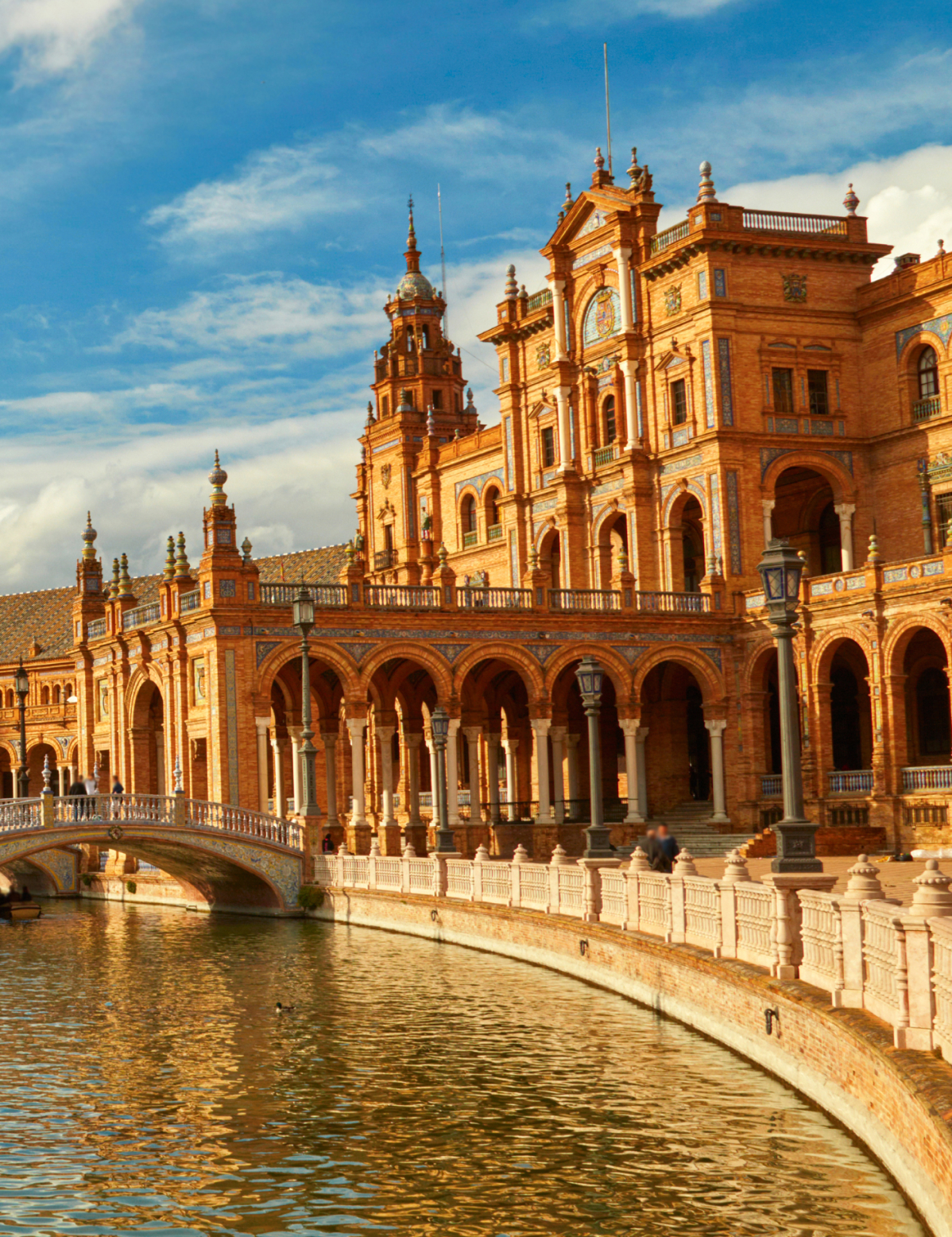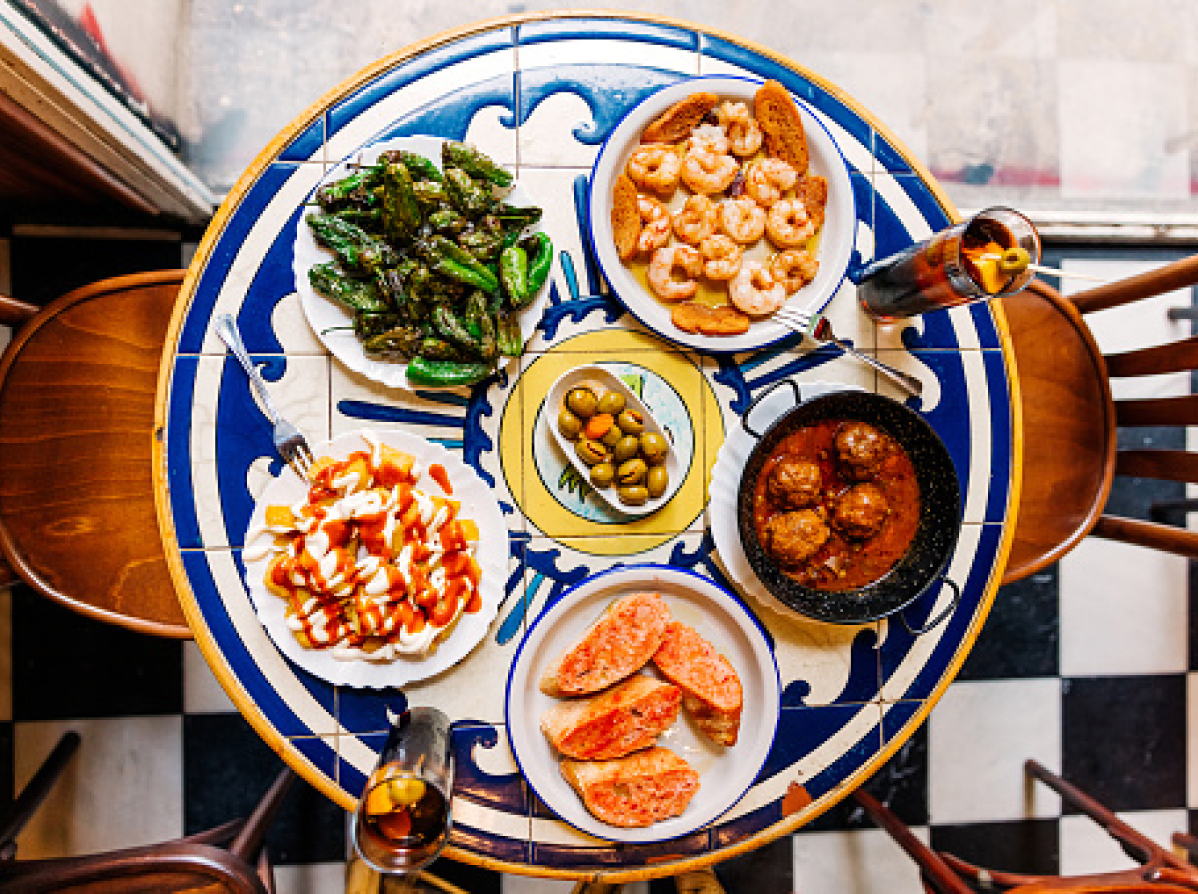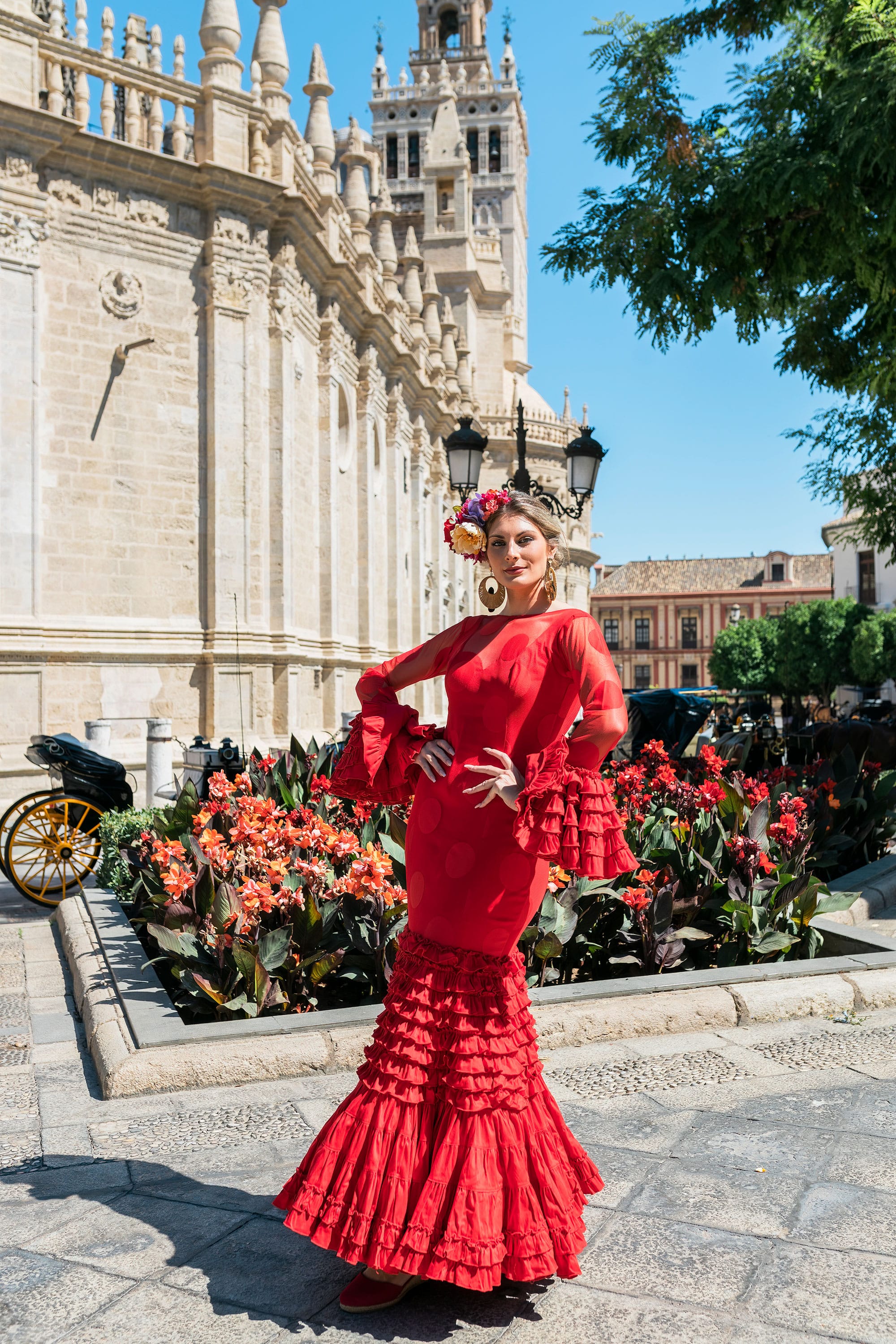Start at the Center
The historic center of Seville—or Sevilla, in Spanish—with its narrow, winding cobblestone streets, is easy to navigate by foot. Either Hotel Colon, a Grand Melia Hotel, or Hotel Alfonso XIII, A Luxury Collection Hotel, Seville, make a convenient and opulent home base. Both hotels were built for the 1929 Expo—the latter was commissioned by the King of Spain for whom it’s named. A brief stroll from both properties, you’ll find the famed 16th-century Seville Cathedral, the world’s largest Gothic church, and its towering belltower, La Giralda, which you can climb as visitors have done for centuries.
To experience Seville like a local, you’ll want to adjust to Seville time. That means breakfast—typically tostada, a thick slice of toast traditionally topped with tomato, olive oil, and salt—at around 10 am. A few hours later you might stop at an ultramarine, a sort of mashup of a bar and a grocery store, to pick up a bocadillo—a baguette or soft crusty mollete sliced lengthwise and filled with jamón Serrano or lomo de cerdo (fried pork tenderloin).






